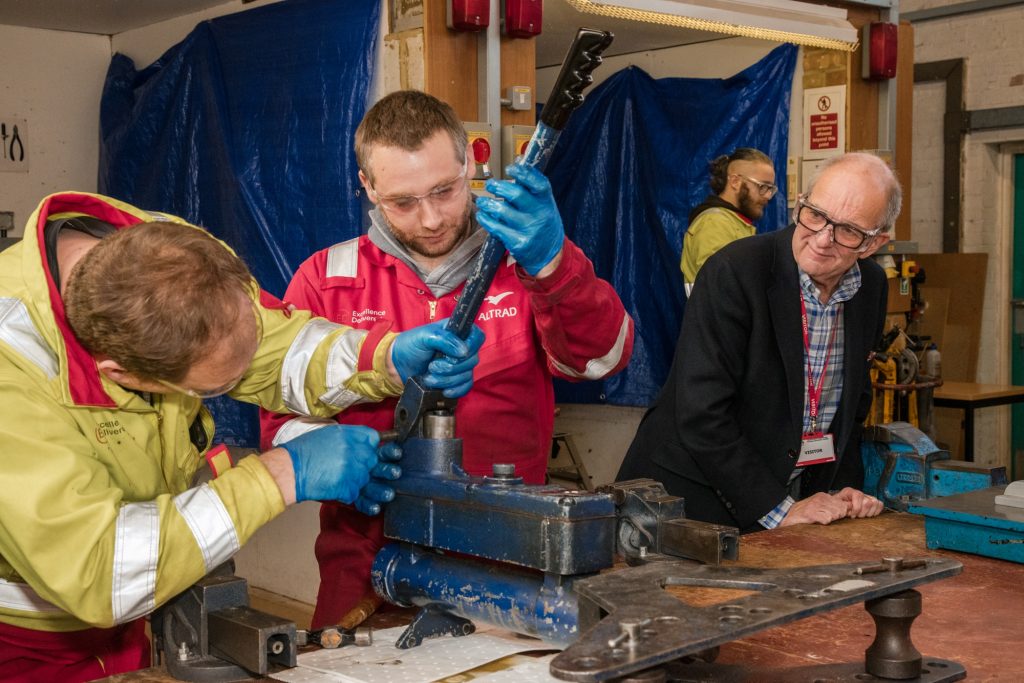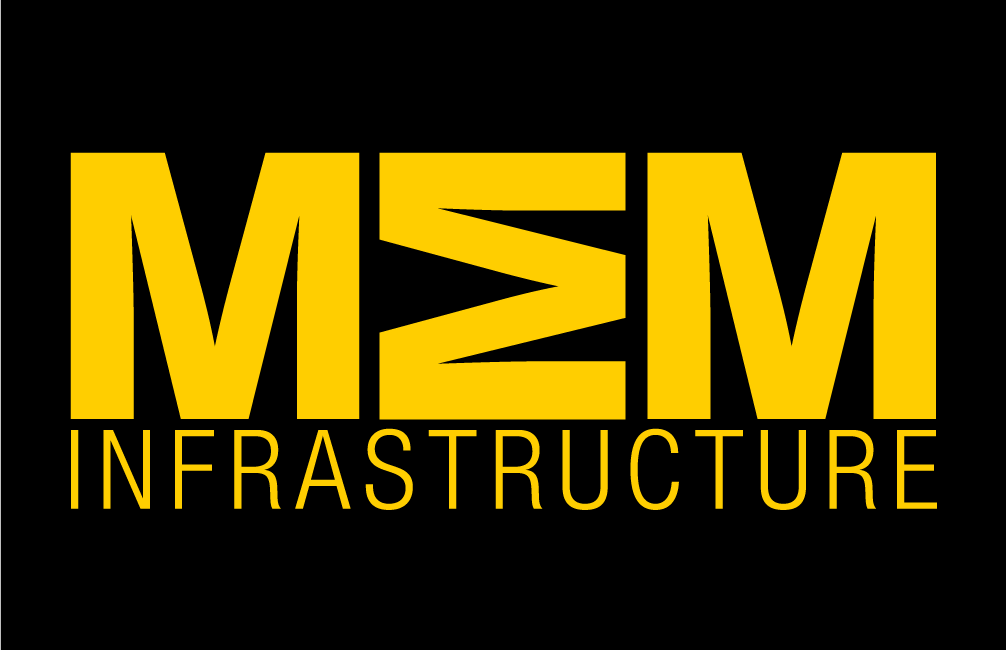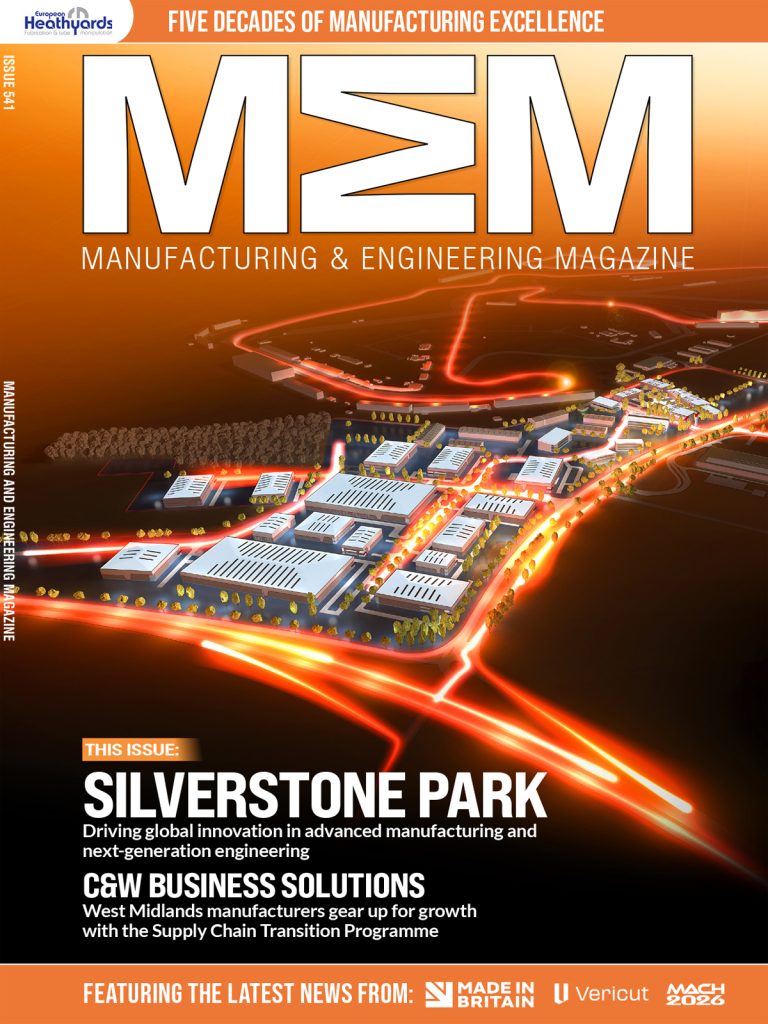Findings published today (14 January) from the ECITB’s Workforce Census reinforce the scale of the challenge facing the engineering construction industry (ECI) to ensure it has the thousands of additional skilled workers needed to meet future demand.
The ECI plays a crucial role in the UK meeting its net zero ambitions, spanning sectors that focus on the processing, maintenance and decommissioning of heavy industry, including oil and gas, nuclear, power generation, renewables, chemicals, food and drink, pharmaceuticals and water treatment.
The Engineering Construction Industry Training Board’s (ECITB) report reveals that 71% of employers are experiencing challenges in hiring workers, up from 53% in 2021, with electrical engineers, pipefitters, riggers and design technicians among the hardest to fill vacancies.
Some of the primary reasons cited include a shortage of qualifications and skills among candidates, a mismatch between candidate expectations and what employers can offer, a limited applicant volume, mobility and location issues, and increased competition among employers and other sectors.
The report also highlights that despite an encouraging increase in the number of workers under 30 now working in the industry, up from 14.7% of the workforce in 2021 to 16.8%, this is not yet sufficient to counterbalance the impact of the upcoming wave of possible retirements, with the share of workers over 60 increasing to 14.7%, up from 11.6%.
The Census highlights craft roles as a particular area of concern, with the average worker tending to be older than the industry average. For example, 30% of platers, 24% of welders and 20% of pipefitters are over 60.
The ECITB Workforce Census 2024 offers a comprehensive overview of the ECI workforce, covering distribution across sectors and regions, demographic trends, hiring challenges and business opportunities over the next three years. It was last done in 2021.
ECITB Chief Executive Andrew Hockey said: “The Census is vital in helping industry understand labour market dynamics, anticipate workforce challenges and develop strategies to address skill gaps across Great Britain.
“The hiring challenges are predominantly for skilled workers where engineering construction companies are competing to recruit from the same pool of experienced workers.
“But we also need to increase the pool of people joining the industry – training new recruits, encouraging people to embark on a career in the ECI and increasing training provider capacity to grow new entrant numbers.
“That’s why almost half of the £87m committed to support industry in our three-year strategy (2023-2025) has been allocated to supporting new entrants including through our apprenticeship and graduate grants, Scholarship and Work Ready programmes.
“Our Regional Skills Hub funding is designed to boost training provider capacity and grow new entrant numbers in the ‘Industrial Cluster’ hot spots and other major engineering construction centres of activity that are at the heart of the UK’s decarbonisation agenda.
“Only through bringing in new talent, training and upskilling existing workers can industry benefit from the skilled workforce it needs both for now and the future. The ECITB will continue to support employers to invest in their talent pipeline – from helping industry to grow the number of apprenticeships and graduate opportunities, developing alternative entry pathways as well as funding quality training to upskill and reskill the workforce.
“By investing in the workforce, new and existing, the industry has a fighting chance of closing the skills gap – and this mission is one that the ECITB remains fully committed to.”
As well as providing a vital snapshot of the industry, the data from the report supports the ECITB’s Leading Industry Learning Strategy with a strong evidence base to inform decision-making in helping address ECI skills shortages.
The data will be used to feed into the ECITB’s Labour Forecasting Tool (LFT), which estimated in November 2023 that the demand for new workers needed in the ECI by 2028 could be much higher than previously thought.
These latest findings also reinforce the career motivation study – Inspiring Directions – the ECITB published in February 2024, which revealed the industry’s different sectors are struggling to appeal to the general population, and in particular young people and women, to help plug looming workforce and skills shortages.

Other key findings of the ECITB Workforce Census
- The Census gathered information on 74,609 workers representing 78.8% of the in-scope workforce, up from 45,000 workers in 2021.
- The 162 establishments that took part shared detailed data on 1,621 locations.
- Nuclear is now the largest sector in the ECI in terms of workforce size, comprising 39.2% of all workers, surpassing oil and gas at 35.2%.
- The renewables sector has seen rapid growth over the past three years, nearly doubling its in-scope workforce share to 6.2%. Emerging sectors such as hydrogen (1.1%) and carbon capture (1.2%) also experienced significant growth.
- England comprises 70.8% of the workforce, primarily in Cumbria, Teesside, the Humber estuary, the River Mersey area up to Warrington and its surroundings, and along the Bridgwater-Bristol and Reading-London axes.
- Scotland accounts for 17% of the workforce, with the Central Belt and Aberdeen as key hotspots, and Wales 2.2% (with Pembrokeshire as its primary hub).
- Offshore workforce deployment remains substantial, comprising nearly 10% of the ECI workforce, down from 12% in 2021.
- The share of women in the ECI increased from 13.8% in 2021 to 16.9%. However, wider demographic data shows improvement is needed.
- The survey gathered data on 11,000 different job roles, which were consolidated into ten broad categories. Engineers made up 19.6% of these roles and managers 18%, with craft (13.5%), technicians (12.5%) and professionals (11.2%) making up the top five.
- Collectively, industry anticipates a workforce growth of 11.7% through 2027.
- Only 1.1% of employers expect a decrease in headcount, while 83.3% expect an increase.
Additional reports will be published in the next month that provide a more granular breakdown of the data by sector and geography.
Census background
The ECITB conducts a census every three years, with in-scope employers providing information on workforce numbers by occupation, sector and location, as well as demographics data on age, gender, ethnicity, disability and nationality.
Employers primarily involved in engineering construction are considered ‘in-scope’ of the ECITB’s remit, with those exceeding a certain size legally required to contribute to an industrial training levy.
The ECITB launched its first workforce census in 2021 to address the lack of dedicated and detailed labour market intelligence in the industry. Since then, the ECITB and the industry have used this data to gain a more refined understanding of workforce trends, training needs and skills transferability potential.
In 2024, employers were asked to fill out an online survey in May or June, with the questionnaire also including questions on expected workforce growth, business opportunities by sector and hiring challenges.
Andrew added: “Thanks to a record response rate from the ECI, up from 54% of the workforce covered in 2021 to 78.8%, the ECITB will now be able to provide more precise, up-to-date data to industry and make predictions on future workforce trends and labour demands.
“Industry will benefit from this high-quality database for the next three years. The Census data will help inform training interventions and ensure accurate representation of industry in our discussions with governments and other partners.
“It will also inform the work currently underway in developing our next strategy on which we will be consulting industry in the spring.”
The ECITB Workforce Census and the LFT have contributed – either through direct ECITB involvement or as a data source – to the development of strategies aimed at addressing skills shortages and ensuring that the needs of engineering construction projects are properly understood and analysed. Examples include reports related to the national infrastructure and construction pipeline, sectoral and regional skills gaps, industrial clusters and the Government’s Green Jobs Action Plan and Clean Power 2030 Action Plan.
ECITB Workforce Census – read the full report here:
https://www.ecitb.org.uk/wp-content/uploads/2025/01/ECITB-Workforce-Census-Report.pdf
Find out more about the ECITB Workforce Census at:www.ecitb.org.uk/research/census/
Manufacturing & Engineering Magazine | The Home of Manufacturing Industry News















